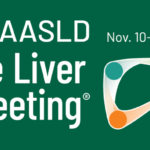Editor’s Note:
The 13th Asia-Pacific Primary Liver Cancer Expert Meeting (APPLE 2023) recently concluded in Seoul, South Korea, bringing together top experts in liver and biliary system tumors from around the world to discuss clinical hot topics and challenges. Dr. Huichuan Sun from Zhongshan Hospital, Fudan University, China, shares and interprets the latest developments and frontiers, including the Asia-Pacific consensus and groundbreaking research with us.

Learning from Others – Insights from Japan’s Intermediate Liver Cancer Transformation Research
Dr. Sun: In general, the APPLE conference has further advanced the treatment strategies for liver cancer, and the emergence of more innovative therapies holds promise for benefiting a large number of liver cancer patients in China. During the China-Japan Translational Forum at the APPLE conference, I was honored to give a keynote report on the progress of liver cancer transformation therapy. Dr. Masatoshi Kudo from Kindai University presented the results of a large-sample, multicenter study on intermediate liver cancer transformation therapy in Japan, which showed that lenvatinib combined with intervention therapy could provide better survival benefits for intermediate liver cancer patients, with approximately 30% of patients achieving “curative transformation.” In this study, Dr. Kudo offered unique insights into patient selection and treatment strategies, which are worth learning from for our Chinese colleagues.
Unlike liver cancer patients in other countries, Chinese liver cancer patients are typically diagnosed at a later stage with larger tumor burdens. The tumor diameter of Chinese first-diagnosis liver cancer patients is 2-3 times that of Japanese patients. Therefore, Chinese doctors often have a shorter window for treating liver cancer, making the challenge greater. Chinese doctors frequently need to choose stronger combination treatment options, including drug therapy combined with intervention, continuous hepatic artery chemotherapy, radiation therapy, and other local treatment methods, at the initial stage of treatment. Compared to single treatment methods, combination treatment has a higher tumor shrinkage rate but also places greater demands on the patient’s overall condition and liver function. Prospective selection of more specific and sensitive treatment options for patients has always been a focus and challenge of clinical research. Given that Chinese liver cancer patients have larger tumor burdens and are diagnosed at a later stage, many patients may not have another chance at treatment after their initial treatment. Therefore, improving the success rate of initial treatment for patients will become a key focus of clinical exploration in China in the future.
Recent Significant Research in Hepatobiliary Tumor Treatment, at Home and Abroad
Dr. Sun: In terms of systemic treatment for advanced liver cancer, the 4-year survival follow-up data from the HIMALAYA Phase III clinical trial, which was recently disclosed, suggests that advanced liver cancer patients treated with the STRIDE regimen (tremelimumab + durvalumab) achieved a 4-year overall survival rate of 25.2% [1]. In other words, approximately 1/4 of advanced liver cancer patients receiving the dual immune therapy regimen can survive for 4 years. This study’s results indicate that the current treatment regimens for advanced liver cancer patients are advancing to a higher level.
Regarding postoperative adjuvant therapy for liver cancer, various treatments, including chemotherapy, intervention, immunotherapy, have been explored in the industry. In China, doctors and patients more commonly use postoperative adjuvant intervention therapy, especially for high-risk patients, as it can reduce the possibility of postoperative recurrence. The results of the IMbrave 050 study, disclosed in April of this year, suggest that atezolizumab combined with bevacizumab can effectively reduce the recurrence of liver cancer in postoperative patients [2]. From the perspective of postoperative adjuvant drug therapy, this is the first large-scale, pivotal Phase III study that confirms the efficacy of systemic treatment in the field of adjuvant liver cancer treatment, representing a significant breakthrough.
The IMbrave 050 study was a cross-design study, and at this APPLE conference, Dr. Kudo also expressed his views on the study results. He believes that there may be a difference in overall survival between the two groups, but the experimental group may only have a trend toward superiority over the control group, without statistical significance. In the future, with the approval of regulatory authorities in various countries for this treatment regimen, atezolizumab combined with bevacizumab may become the standard postoperative adjuvant treatment regimen.
Currently, in the field of postoperative adjuvant treatment for liver cancer, including PD-1 inhibitor monotherapy, PD-L1 inhibitor combined with bevacizumab, and apatinib combined with cabozantinib, among others, studies have completed enrollment and will gradually disclose relevant research results in the second half of this year or next year. The situation of limited medical resources and medications in the field of postoperative adjuvant liver cancer treatment will change.
In the field of biliary tract tumor system treatment, in terms of the disease itself, the prognosis is worse than hepatocellular carcinoma, with shorter patient survival and a higher likelihood of metastasis. This type of tumor is the main battleground for systemic treatment, as only a few patients are suitable for surgical treatment. Currently, we use two main treatment approaches for biliary tract tumor patients: 1) a stronger treatment regimen combining targeted therapy, immunotherapy, and chemotherapy. Early clinical research data results led by Dr. Zhou Jian from our hospital, based on this treatment approach, show that approximately 80% of patients achieve tumor remission (ORR), and the treatment effect is quite ideal [3]. 2) Genetic testing is conducted to target gene mutations such as HER2, IDH1, and EGFR for targeted drug therapy, and 40-50% of patients experience tumor remission with this treatment strategy.
CLEAP – The Voice of Young Chinese Liver Cancer Researchers
Dr. Sun: Young and middle-aged physicians have fewer clinical resources and face difficulties conducting high-quality clinical research. In view of this, the goal of the Chinese Young and Middle-aged Liver Cancer Research Collaboration Group (CLEAP) is to unite young and middle-aged doctors, gather their ideas, and provide them with more opportunities to showcase their research ideas. Through extensive communication, CLEAP aims to create an academic atmosphere where young and middle-aged doctors can freely express themselves, learn from each other, and strive for excellence. This will enable young Chinese liver cancer physicians to shoulder the responsibility of advancing the field of liver cancer in China as soon as possible. Since 2022, under the coordination of CLEAP, four to five retrospective studies are nearing completion. In the future, CLEAP will organize the strength of young and middle-aged individuals from various parties to conduct prospective studies with large sample sizes.
References:
1. KyoungSoo Lim et al. Population Pharmacokinetics and Exposure-Response Analysis of Tremelimumab 300 mg Single Dose Combined with Durvalumab 1500 mg Q4W (STRIDE) in Patients with Unresectable Hepatocellular Carcinoma, J Clin Pharmacol, 2023 Jun 10.
2. Han Chu Lee , Ann-Lii Cheng, Pierce Chow, et al. IMbrave050: Adjuvant Atezolizumab+Bevacizumab VS Active Surveillance in Hepatocellular Carcinoma Patients at High Risk of Disease Recurrence Following Resection or Ablation. APPLE 2023 Abstract OP-03.
3. Shi G M , Huang X Y , Wu D ,et al.Toripalimab combined with lenvatinib and GEMOX is a promising regimen as first-line treatment for advanced intrahepatic cholangiocarcinoma: a single-center, single-arm, phase 2 study.Signal Transduction and Targeted Therapy, 2023, 8(1).DOI:10.1038/s41392-023-01317-7.


